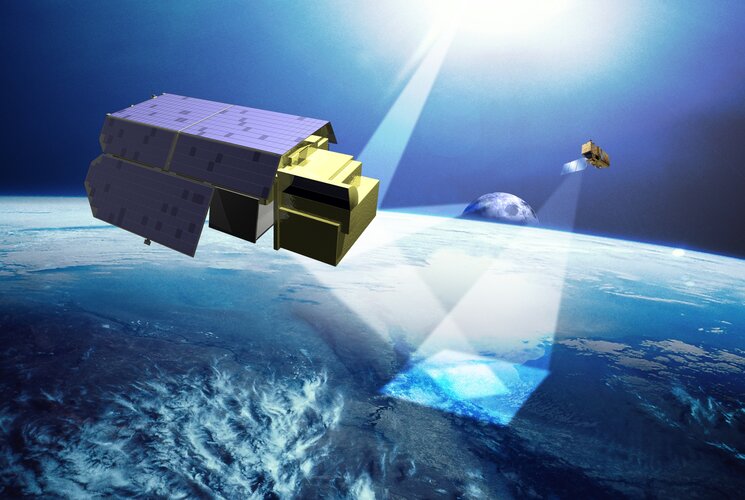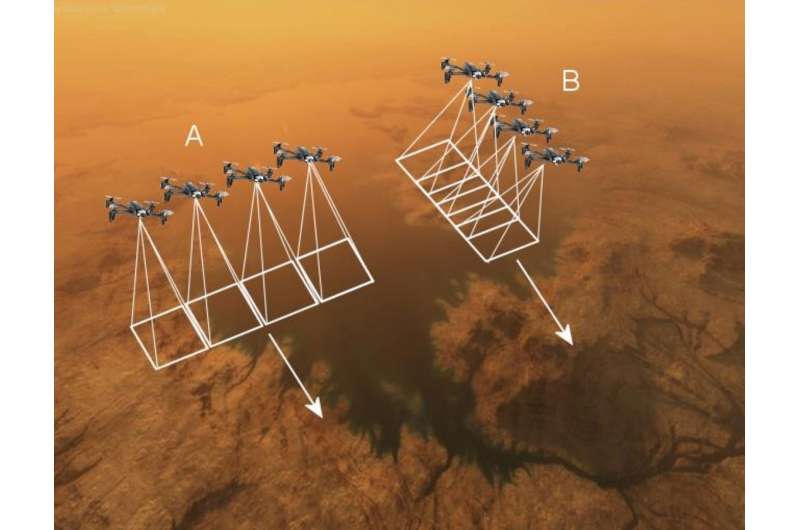
Copernical Team
UNI Bremen involved in AMADEE-20 Mars Simulation
 AMADEE-20: That is the name of the simulated Mars mission of the Austrian Space Forum, which was carried out in the Israeli Negev Desert. More than 25 experiments were carried out there. Two projects from the University of Bremen, namely INTERTEAM and MarsLock, were also involved in the research.
b>What are team processes like when the crew is on Mars? br> /b>
The INTERTEAM project addre
AMADEE-20: That is the name of the simulated Mars mission of the Austrian Space Forum, which was carried out in the Israeli Negev Desert. More than 25 experiments were carried out there. Two projects from the University of Bremen, namely INTERTEAM and MarsLock, were also involved in the research.
b>What are team processes like when the crew is on Mars? br> /b>
The INTERTEAM project addre New Curtin study pinpoints likely home of Martian meteorites
 Curtin University researchers have pinpointed the likely origin of a group of meteorites ejected from Mars, using a machine learning algorithm that analyses high-resolution planetary images.
The new research, published in Nature Communications, identified meteorites that landed on Earth likely originated from Mars' Tooting crater, located in the Tharsis region, which is the largest volcani
Curtin University researchers have pinpointed the likely origin of a group of meteorites ejected from Mars, using a machine learning algorithm that analyses high-resolution planetary images.
The new research, published in Nature Communications, identified meteorites that landed on Earth likely originated from Mars' Tooting crater, located in the Tharsis region, which is the largest volcani Sol 3285: Oh So Close
 The drive over the weekend was successful, gaining us more than 6 m in elevation - not bad for a weekend hike! Looking at this terrain, it is probably not surprising to you that looking uphill into the tilted bedrock slabs and thin resistant veins jutting up in all directions makes it hard to plan our next move.
Indeed, today's drive will take us close to the area where we want to drill ne
The drive over the weekend was successful, gaining us more than 6 m in elevation - not bad for a weekend hike! Looking at this terrain, it is probably not surprising to you that looking uphill into the tilted bedrock slabs and thin resistant veins jutting up in all directions makes it hard to plan our next move.
Indeed, today's drive will take us close to the area where we want to drill ne Hypersonix to use Siemens' software in design of its hydrogen fuelled launchers
 Brisbane-based aerospace engineering start-up Hypersonix Launch Systems has chosen Siemens' Xcelerator portfolio of software to help design its sustainable and reusable hypersonic launch vehicle, Delta-Velos.
Hypersonix plans to implement advanced aerodynamic and thermal modelling software from Siemens' Simcenter portfolio, which will play a key role in building certainty and reliability o
Brisbane-based aerospace engineering start-up Hypersonix Launch Systems has chosen Siemens' Xcelerator portfolio of software to help design its sustainable and reusable hypersonic launch vehicle, Delta-Velos.
Hypersonix plans to implement advanced aerodynamic and thermal modelling software from Siemens' Simcenter portfolio, which will play a key role in building certainty and reliability o SpaceFund Invests in Rhea Space Activity
 SpaceFund Inc has invested in the rapidly growing astrophysics start-up company Rhea Space Activity (RSA). SpaceFund's capital injection into RSA will energize the company's ongoing development of scientific and engineering infrastructure needed to create a holistic, world-leading Lunar Intelligence (LUNINT) capability as soon as 2024.
This capability will yield a vital product for the com
SpaceFund Inc has invested in the rapidly growing astrophysics start-up company Rhea Space Activity (RSA). SpaceFund's capital injection into RSA will energize the company's ongoing development of scientific and engineering infrastructure needed to create a holistic, world-leading Lunar Intelligence (LUNINT) capability as soon as 2024.
This capability will yield a vital product for the com Laboratory will illuminate formation, composition, activity of comets
 Comets are icy and dusty snowballs of material that have remained relatively unchanged since they first formed billions of years ago. Studying the small bodies provides clues about the formation of the solar system.
In Review of Scientific Instruments, by AIP Publishing, researchers from the Technische Universitat Braunschweig, the Austrian Academy of Science, the University of Bern, the G
Comets are icy and dusty snowballs of material that have remained relatively unchanged since they first formed billions of years ago. Studying the small bodies provides clues about the formation of the solar system.
In Review of Scientific Instruments, by AIP Publishing, researchers from the Technische Universitat Braunschweig, the Austrian Academy of Science, the University of Bern, the G NASA, Intuitive Machines announce landing site location for Lunar drill
 In late 2022, NASA will send an ice-mining experiment attached to a robotic lander to the lunar South Pole on a ridge not far from Shackleton crater - a location engineers and scientists have assessed for months. NASA and Intuitive Machines, an agency partner for commercial Moon deliveries, announced the location selection Nov. 3.
NASA data from spacecraft orbiting the Moon indicate this l
In late 2022, NASA will send an ice-mining experiment attached to a robotic lander to the lunar South Pole on a ridge not far from Shackleton crater - a location engineers and scientists have assessed for months. NASA and Intuitive Machines, an agency partner for commercial Moon deliveries, announced the location selection Nov. 3.
NASA data from spacecraft orbiting the Moon indicate this l Boeing gets OK for satellite grid to provide internet from space
 Boeing on Wednesday gained US authorization for a project to launch satellites that will provide internet services from space.
The Federal Communications Commission (FCC) said in a statement it had approved a license for the aerospace giant "to construct, deploy, and operate a satellite constellation" that will "provide broadband and communications services for residential, commercial, inst
Boeing on Wednesday gained US authorization for a project to launch satellites that will provide internet services from space.
The Federal Communications Commission (FCC) said in a statement it had approved a license for the aerospace giant "to construct, deploy, and operate a satellite constellation" that will "provide broadband and communications services for residential, commercial, inst TRUTHS shapes up

ESA’s new TRUTHS mission is taking shape. Highlighted today at COP26, this new mission is moving from its feasibility phase into its preliminary design phase. TRUTHS is set to provide measurements of incoming solar radiation and of radiation reflected from Earth back out into space as traceable International System of Units. These measurements will allow changes in Earth’s climate to be detected faster, and they will be used to calibrate data from other satellites. In effect, TRUTHS will be a ‘standards laboratory in space’, setting the ‘gold standard’ for climate measurements.
A mission to explore the methane lakes on Titan

Neither mission will be the first time Titan's surface has been visited, though. That distinction belongs to Huygens—a lander launched with the Cassini probe. Unfortunately, with the relatively limited technology of a probe launched in the late 1990s, it was only able to send data back from the surface for about an hour and a half.

